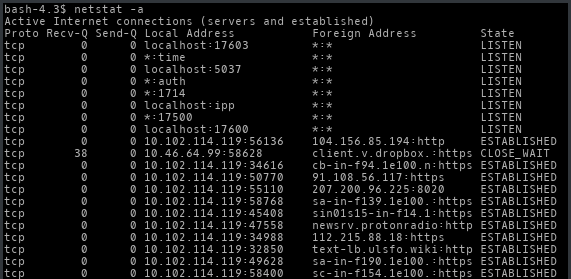

The Local address that it use, re your IP address or localhost, 127.0.0.1, 0.0.0.0 the colon (punctuation) aka (:) is a splitter that split the IP from the Port, so what you see after the colon (punctuation) is the current open port number. The protocol that the current connection is use, re TCP, UDP. The port number that it use is the open ports on the current computer, so here is some more explanation about the netstat output command:

a – tell netstat to bring all the current connection and listen ports.The IP address that this port is connected to and the port number that it use. This will output a list of current open port. When the command line window is open you can type in netstat -an and press enter. Using the keyboard you can press the windows key together with the R key/button, this will open the run command, type in cmd and press enter, where you see the Open text.Press the windows button, aka start, and in the line, where you can write, type cmd and press enter ( the line is where you can search programs and files).

Hope this article helped you to find the Linux Equivalent Windows find command in Powershell and now you know how to tail the log file in windows without using any special tools like baretail etc.Here are some steps to open the run command you can use some methods: In fact, it is the same command as previous but an extra -Wait has been added.Īs shown in the screenshot you can see the cursor is at the end of the file it has not returned to terminal and monitoring (or) waiting for more lines to come. Here is the windows PowerShell tail -f command equivalent Get-Content command Get-Content. In windows, the same is achieved with another flag/option named Wait which is done using a -f flag in Linux tail command The wonderful feature of tail is to watch for changes as it happens and see the live logs as it is getting updated. \localhost_access_log.txt -Tail 10Įxecution result of the preceding command is given below. Here is a simple tail command equivalent windows powershell Get-Content command. This command has a flag or attribute named Tail which make it equivalent to the Linux tail command Powershell has a command named Get-Content it exactly does the job as it was named after.


 0 kommentar(er)
0 kommentar(er)
